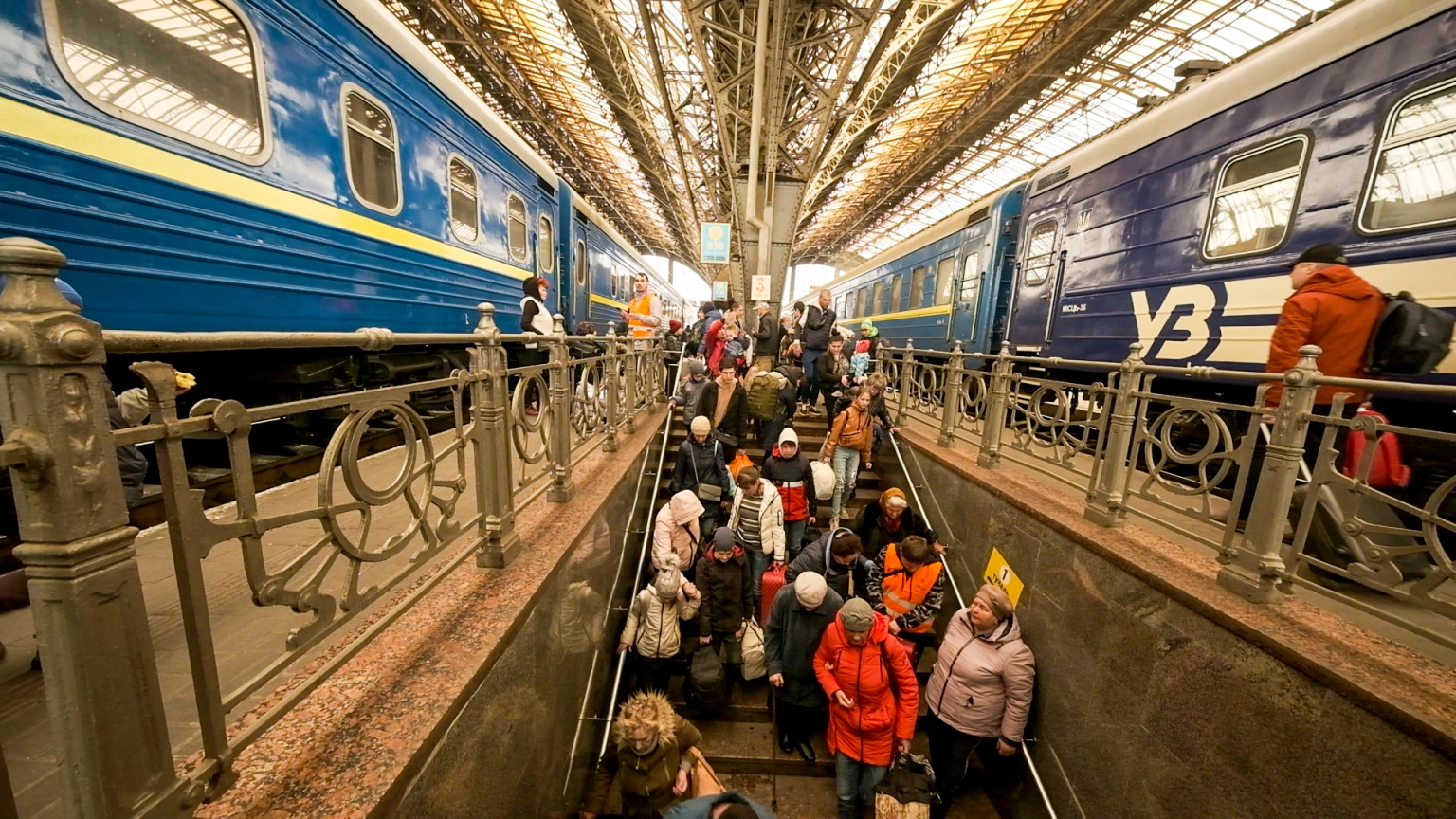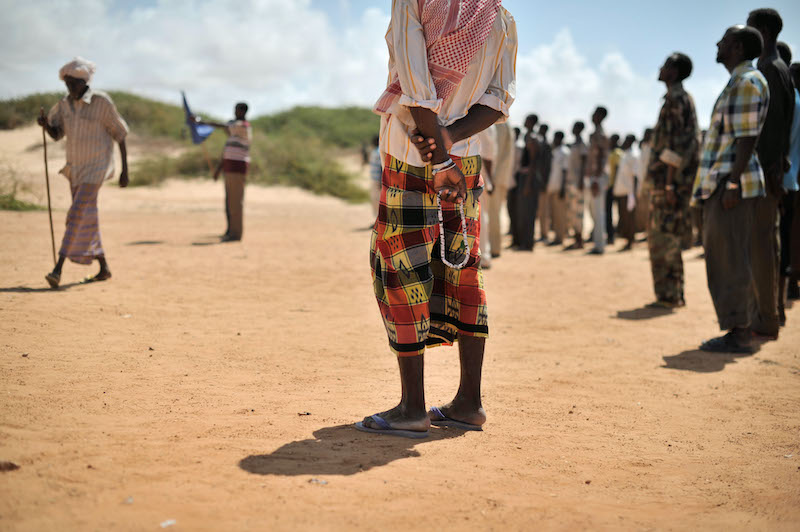News
Ukraine's Mosquito Strategy Highlights Crucial Military Lessons and Exposes Russia's Failures
As Russia's war with Ukraine drags on into the sixth week, and as Moscow retreats from Kyiv, leaving hundreds of dead civilians in its wake, several immediate military lessons are becoming clearer. This is the first of three articles from a front-row seat in Ukraine.

The first of these lessons is that the old cliché got it exactly right: It is not the size of the dog in the fight, but the fight in the dog.
As the strategist Carl von Clausewitz reminds, there is a difference between war on paper or “ideal war” and “war in reality” — numbers and kit are not an exact gauge of capability. Fighting will is crucial, and here the Russians seem to have relearnt another lesson: Without motivation, conscripts and untrained militia are usually next to useless.
By contrast, the Ukrainians have learnt well the lessons of the 2014 war with Russian-backed forces in Donbas.
One of these has been to allow the commanders on the ground the authority to make decisions and flexibility as the circumstances demand. They are also not seeking to hold territory, but rather absorb the Russian invasion and then conduct hit-and-run attacks — the mosquito strategy — on stretched supply lines.
A related lesson is that people's defence works, if mobilised with the proper motivation and training. This was clear at the outset, when the Russians failed to quickly seize the strategic Antonov Airport just 10km from Kyiv in the first hours of the war, an engagement which infamously resulted in the destruction of the world's largest aircraft, the Antonov An-225 Mriya. Although Russian forces eventually captured (and have subsequently abandoned) the facility, Ukrainian resistance — a combination of territorial defence, special forces and regular army — nixed Russian plans of a quick capitulation of Kyiv.
It was a metaphor for what was to come over the following weeks.
A further lesson is in the limits of tank warfare, at least against modern anti-tank weapons and a determined enemy. As one Ukrainian airborne commander reminds, however, of the foreign-supplied anti-tank weaponry: “NLAW and Javelin don't fight by themselves. People are fighting. But the combination of unconventional tactics and hyper-precision weapons leads to amazing results.”
At the very least, tanks need infantry, a lesson the Russians have learnt at a heavy cost.
Intelligence is a critical enabler of military actions but also a means to provide security and a valuable foreign policy tool. We don't know the exact extent of Western intelligence assistance to Ukraine, but one must assume it is a critical factor in understanding Russian movements, and control of the battlespace — air, sea and land.
Russia's ability, in contrast, to win and manage control of the airspace has been surprisingly poor.
An engaged diaspora also helps, not least in buying off-the-shelf equipment from night-vision goggles to body armour where Nato has been unable to assist. Tactical intelligence has been enhanced by widespread use of commercial drones, for instance, though there has been some controversy about the deployment of Chinese drones which have invited unerringly accurate counterstrikes, seemingly pinpointing exactly the launching points.
All about logistics
The long, gridlocked lines of Russian convoys have illustrated, if nothing else, that you need plenty of training to make these operations work. Logistics, as ever, rules the battlespace. One Ukrainian commander recalled the words of Napoleon in conversation about this imperative: “The line between disorder and order lies in logistics.”
There are other lessons that may become clearer over time, not least that stamina and patience are formidable warriors.
Critically, the media is a key dimension of modern warfare. The contemporary battlefield is a transparent backdrop to leadership, where the use of media and a suitable narrative can make all the difference. Also, in the digital space cyber is a new aspect that has to be prepared for and against.
Finally, since war is about the failure of politics, the political setting and leadership direction is crucial.
We know from this campaign, and from others (think Saddam Hussein in Iraq, for instance) that those who live in fear are more likely to be misled by their commanders. This type of leadership also suppresses innovation, flexibility and improvisation, which together are game-changers.
Still, tactical victories are one thing, strategic-level moves are another.
It seems likely that the Russians will now concentrate on closing the gap between their northern and southern axis of advance in the eastern part of Ukraine, and cutting off that territory from the rest of the country, while continuing to deny Ukrainians access to the sea by continuing to pound Mariupol, Kherson, Odesa and other coastal areas with artillery and missile strikes. Random if regular airstrikes against other population centres will continue, if only to attempt to disrupt the pattern of normal life.
Moscow is likely, too, to leave behind defences to the north of Kyiv, forcing the Ukrainians to spread their limited forces.
Two factors may, however, push the parties towards a peace deal.
The first is Russian failure, arising out of a combination of the military and economic costs. Western sanctions will slowly but inevitably bite, making the conflict a “struggle between the refrigerator and the television”, commented one Ukrainian colonel. Rhetoric may make a full heart, but seldom fills the stomach.
Heavy toll
Nato estimates that, in the first four weeks of combat, Russia may have lost as many as 15,000 troops out of an initial invasion force of about 140,000 (plus another 50,000 militias). The number of wounded would probably treble that overall casualty figure. Skilled troops would be hard to replace, since Russia no longer has the 3.5 million troops it had during the Cold War, but an army only of about 280,000 out of a total military of 900,000, according to the International Institute of Strategic Studies. (By comparison, the US has an active military strength of 1.3 million.)
Russia is attempting this invasion on a relative shoestring. The coalition to evict Saddam from Kuwait in 1991, for instance, numbered 650,000. Some estimate it would take a million troops to occupy Ukraine, troops Russia does not have and cannot afford.

Putting these numbers into perspective, Russia reported 14,400 soldiers killed in its decade of fighting in Afghanistan. Whatever the size of the losses already in Ukraine, the effect on morale is likely to be devastating.
Russia today is extremely sensitive to casualties, one reason Moscow has been forced to admit the use of conscripts in the operation, despite an earlier denial by President Vladimir Putin. Public opinion seems light years away from accepting the scale of the 25 million civilian and military deaths in World War 2, precisely perhaps because of the extent of these losses.
Steadily ratcheting sanctions against Russia in the face of increasingly outrageous atrocities against civilians will make this failure more likely, but only over time and depending, to an extent, on China's willingness to offer a financial escape route. It will also hinge on the West's willingness to pay the premium for sanctions, especially on oil and gas, even if everyone, as Christof, a trucker hauling medical supplies from the south of Germany to Lviv, put it, “needs to understand there is a price to be paid to enjoy democracy”.
Not only does the Russian retreat from Kyiv secure Ukraine's survival as an independent nation, but the unearthing of mass graves and widespread executions could (and should) prompt a tougher international and especially Western response not just on sanctions but on security assistance. Western policymakers will be scratching their heads as to how to increase assistance without starting World War 3. Cutting off gas purchases seems to be the biggest lever available.
Such atrocities should force decent countries to do the decent thing.
In this way, Putin's overreach on Ukraine could signal the beginning of the end of the, until now, ascendant strongman in politics, weakening and delegitimising this contemporary version of populism.
The second factor would be Ukrainian collapse, less likely now than ever, but still a possibility. The cost of the conflict is massive. Conservatively the war is costing Ukraine $10-billion per day in materiel along with the loss of earnings, infrastructure and life. If Putin's strategy is now to grind the Ukrainians down and destroy their cities, strangling their access to the seaports, so crucial for grain exports, this will pose a very high cost to freedom, possibly at the expense of chunks of their geography.
The Hitler error
Given Ukraine's status as the number-one sunflower, number-three corn and top-five wheat producer worldwide, this will have a dramatic impact not only on its own income, but food security in many countries, especially in the majority of African states which are net food importers.
But if Putin has been successful at one thing, it is forging a powerful Ukrainian patriotism and identity. Like Hitler, Putin has stumbled into war without a formal justification or declaration. He seems to have shared a misplaced conviction with Hitler that Ukraine was a “rotten structure” and would come “crashing down”. The Ukrainians will take heart, also, from the very nostalgia that Putin has attempted to invoke, that of the Soviet Union against Nazi aggression, in resisting the temptation to make peace whatever the price.
Absent a peace deal satisfactory to the Ukrainians, this war is likely to drag on as long as Putin is around. After all, the tiny mosquito, ask any African, can bring down any man.
This article originally appeared on Daily Maverick
Photo: Greg Mills


